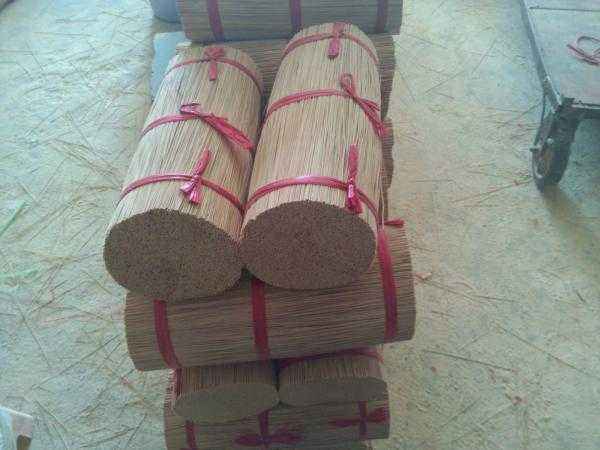What are the key points of traditional Buddhist incense materials
Before manufacturing traditional Buddhist incense, the first step is to prepare the necessary materials. The materials for traditional Buddhist incense generally include four types: medicinal herbs, wood powder, binders, and additional materials. Incense medicine is the most central part of traditional Buddhist incense, which determines the characteristics of the aroma, the effectiveness of the aroma, as well as the level and hierarchy of the aroma. Including natural spices and some traditional Chinese medicinal herbs. Natural spices such as agarwood, sandalwood, benzoin, musk, frankincense, and frankincense; Chinese medicinal herbs such as Yuanzhi, Baihua, Dahuang, Baizhi, Danpi, Dingpi, etc. Because natural spice bases are all included in traditional Chinese medicine, "fragrance" and "medicine" have never been distinguished in history, collectively referred to as "fragrant medicine". This is also the difference between traditional Buddhist incense and modern skill incense. Modern skill incense does not use incense medicine, but uses artificial chemical essence, and the produced incense also loses many effects such as health care.
To produce traditional Buddhist incense, the first step is to comprehensively consider the functions, types, and levels of the incense, and then select spices or medicinal materials based on these basic needs. For example, Zelan, Huilan, Jiaoshu, Guishu, Artemisia annua, Yujin, Yunxiang, etc. are often used as fragrances for literati and scholars; Agarwood, musk, borneol, ambergris and other luxurious fragrant herbs are often used as palace incense and Buddhist incense; Lingling Xiang, Anxin Xiang, Jiangzhen Xiang and other fragrant medicines with unique qualities are often used in Taoist incense.

When buying incense, one should also pay attention to identifying the authenticity and grade of the incense; Pay attention to distinguishing whether fragrant herbs are naturally grown or artificially cultivated; The purchased natural fragrant medicine, even if of excellent quality, is still a "raw" fragrant medicine. If directly used to make fragrance, it may not have good results, and even promote the growth of seedlings. Therefore, it is necessary to apply corresponding special treatments based on the type, origin, and other characteristics of the fragrant medicine in order to fully exert its effectiveness and eliminate possible toxic side effects. This is the "counterfeiting" of fragrant medicine. The principle is the same as the fabrication of traditional Chinese medicine.
Counterfeiting incense is a very important part of traditional Buddhist incense production. The demand for skills is also relatively high. If it is not enough, the results will be difficult to achieve, and if it is too much, the taste will be lost. There are even many considerations for the time and texture of the counterfeit container. By accumulating experience in practice, one can gradually grasp the methods. There are many detailed methods of counterfeiting, such as steaming, boiling, stir frying, frying, etc. Below, we will introduce the methods of counterfeiting sandalwood using the most commonly used material. Sandalwood produced in humid and hot regions has a rich aroma and is an important medicinal herb. However, unprocessed "raw" sandalwood tends to have a strong fire energy, so traditionally it is not directly used to mix with incense. Instead, it is first counterfeited to make its fire energy disappear and its aroma purer.
Article source: Jiangmen bamboo stick fragrance manufacturerhttp://www.dongfangxl.com/
-
09-30
What are the structures of bamboo stick incense?
Bamboo stick incense, also known as string incense, stick incense, or standing incense in Taiwan, and bamboo stick incense in mainland China, is named after its use of bamboo branches, cinnamon bamboo
-
09-30
Incense Manufacturer: Craftsmanship for Making Bamboo Stick Incense
The ancients discovered that any type of spice has the effects of refreshing and calming the mind, so the history of incense burning in China has been over 3000 years, and China can be considered one
-
09-08
Fragrant powder and spice factory: production techniques for bamboo stick fragrance
Nowadays, when making bamboo stick incense, the following methods should be used first:1. Traditional craftsmanship involves hand pouring fragrance.2. Handmade powder coating and mechanical bucket mak
-
08-26
Fragrant powder and spice factory: How to distinguish the quality of bamboo stick fragrance?
We call fragrances made from natural spices "natural fragrances", fragrances with artificially synthesized spices "chemical fragrances", or perhaps "fragrance crafts". Chemical fragrance only has the
